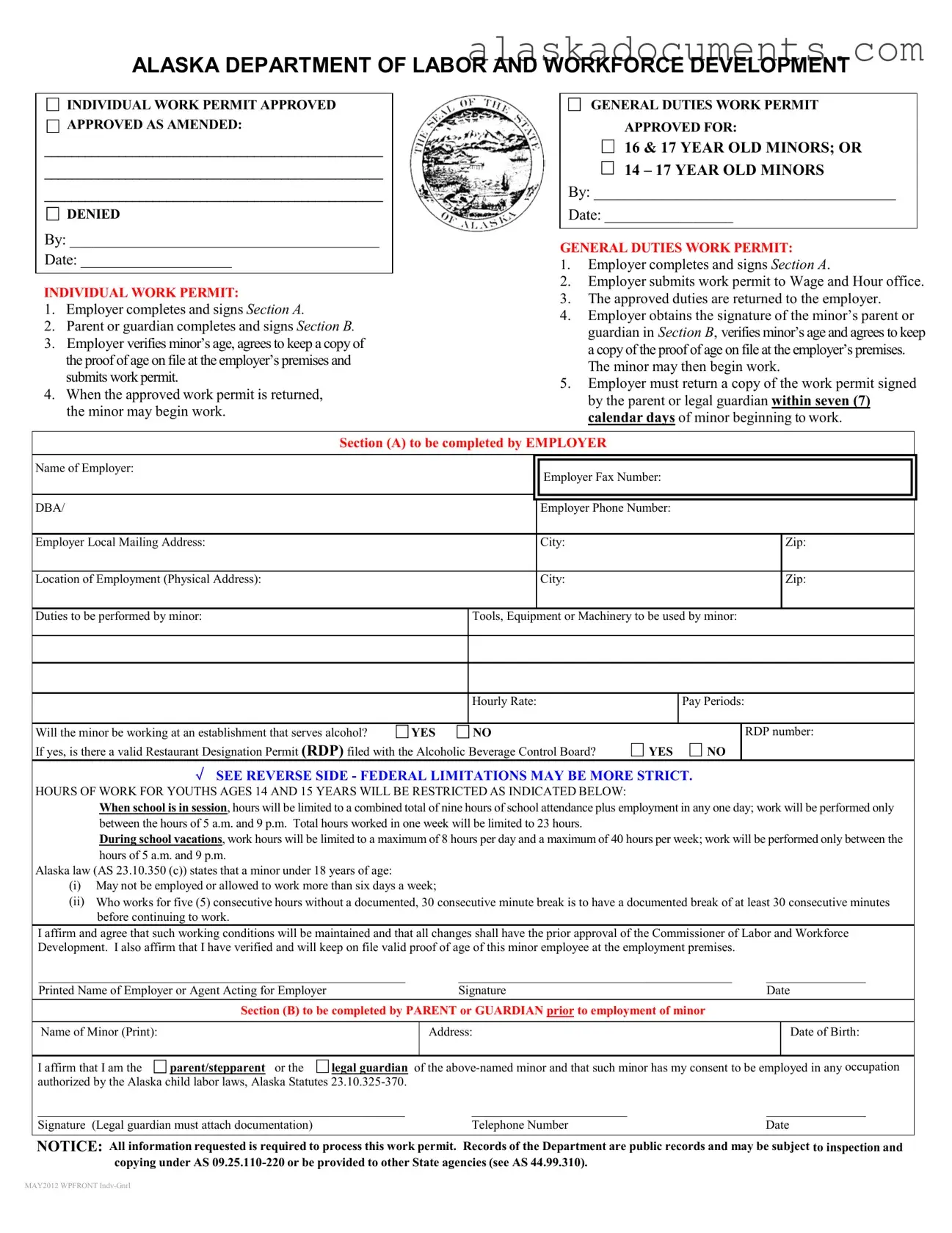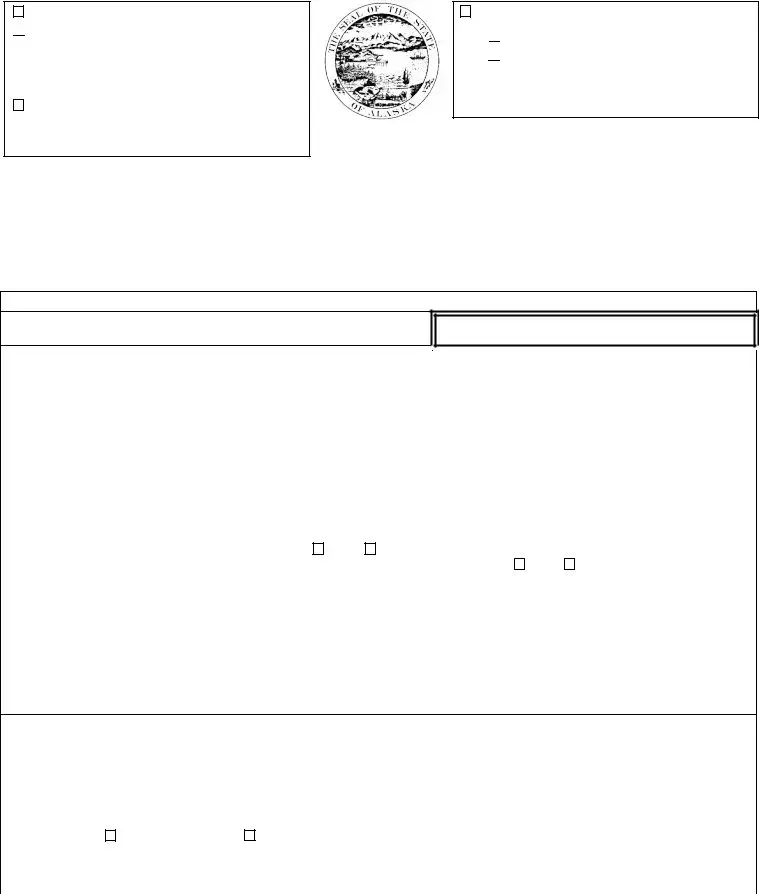OCCUPATIONS PROHIBITED TO ALL MINORS UNDER 18:
1.Occupations in manufacturing, handling, or use of explosives.
2.Occupations of motor vehicle driver or helper (limited exceptions.)
3.Mining operations including coal.
4.Logging or occupations in the operations of any sawmill, lath mill, shingle mill or cooperage.
5.Operations of power-driven woodworking machines.
6.Occupations with exposure to radioactive substances and to ionizing radiation.
7.Occupations involving exposure to bloodborne pathogens.
8.Operation of elevators or other power-driven hoisting apparatus.
9.Operation of power-driven metal forming, punching, and shearing machines.
10.Occupations involving slaughtering, meatpacking or processing, or rendering.
11.Occupations involved in the operation and cleaning of power-driven bakery machines.
12.Occupations involved in the operation of power-driven paper products machines.
13.Occupations involved in the manufacture of brick, tile, and kindred products.
14.Occupations involved in the operation and cleaning of circular saws, band saws and guillotine shears.
15.Occupations involved in wrecking, demolition, and shipbreaking operations.
16.Occupations involved in roofing operations.
17.Occupations involved with excavation operations.
18.Electrical work with voltages exceeding 220, or outside erection or repair, and meter-testing, including telegraph and telephone lines.
19.Occupations involved in canvassing, peddling, door-to-door solicitation, or sales.
IF UNDER 16 THESE ADDITIONAL OCCUPATIONS ARE ALSO PROHIBITED:
1.Occupations in manufacturing, mining, or processing, including work rooms or places where goods are manufactured, mined, or otherwise processed.
2.Occupations involved in operation of hoisting or power-driven machinery other than office machines.
3.Operation of motor vehicle or service as helper on motor vehicle.
4.Public messenger service.
5.Occupations in or about canneries, seafood plants, including cutting, slicing, or butchering, or the operation of any floating plant and including loading or unloading.
6.Work performed in or about boilers, engine rooms, or retorts.
7.Work involved with maintenance or repair of the establishment’s machines or equipment.
8.Occupations that involve working from window sills, ladders, scaffolds, or their substitutes.
9.Occupations which involve operating, setting up, adjusting, cleaning, oiling, or repair of power-driven food slicers, grinders, choppers, cutters, and bakery-type mixers.
10.Work in freezers, meat coolers, or preparation of meat for sale.
11.Loading or unloading to and from trucks, railroad cars, or meat conveyors.
12.Occupations in warehouses except office and clerical work.
13.Occupations involving use of sharpened tools.
14.Occupations in transportation of persons or property, warehousing and storage, construction (including demolition and repair) except office or sales work in connection with these occupations.
Children 14 and 15 years old may only work:
1.outside school hours.
2.No more than 40 hours in any one week when school is not in session.
3.Not more than 18 hours in any week when school is in session.
4.Not more than 8 hours in any one day when school is not in session.
5.Not more than 3 hours in any one day when school is in session.
6.Between 7 a.m. and 7 p.m. in any one day except during the summer (June 1 through Labor Day), when the evening hours will be 9 p.m.
Children 14 and 15 years old may work:
1.A total of 9 hours of school and work combined in one day.
2.Only between the hours of 5 a.m. to 9 p.m.
3.No more than 23 hours per week outside of school hours (domestic work and babysitting excepted).
4.No more than 6 days per week.
There are certain exceptions to the federal law; for example, children in work-study programs through their schools are exempt from some or all of the hour restrictions. For further information on the federal law, contact the United States Department of Labor, Wage and Hour Division, Telephone: 1-866-487-9243. Or in Anchorage: (907) 271-2867
TITLE 4 ALCOHOLIC BEVERAGES -- ALASKA STATUTES
AS 04.16.049. Access of persons under the age of 21 to licensed premises:
(a)A person under the age of 21 years may not knowingly enter or remain in premises licensed under this title unless:
(1)accompanied by a parent, guardian or spouse who has attained the age of 21 years;
(2)the person is at least 16 years of age, the premises are designated by the board as a restaurant for the purposes of this section, and the person enters and remains only for dining; or
(3)the person is under the age of 16 years, is accompanied by a person over the age of 21 years, the parent or guardian of the underaged person consents, the premises are designated by the board as a restaurant for the purposes of this section, and the person enters and remains only for dining.
(c)Notwithstanding any other provision in this section, a person between 16 or 17 years of age may enter and remain within the licensed premises of a hotel, restaurant, or eating place in the course of employment if
(1)the employment does not involve the serving, mixing, delivering, or dispensing of alcoholic beverages;
(2)the person has the written consent of a parent or guardian; and
(3)an exemption from the prohibition of AS 23.10.355 is granted by the Department of Labor and Workforce Development. The board, with the approval of the governing body having jurisdiction and at the licensee's request, shall designate which premises are hotels, restaurants, or eating places for the purposes of this subsection.
(d)Notwithstanding any other provision in this section, a person 18, 19, or 20 years of age may be employed within the licensed premises of a hotel, restaurant, or eating place, may enter and remain within those premises for the purpose of employment, but may not in the course of employment, sell, serve, deliver, or dispense alcoholic beverages.
TOBACCO & PULL-TABS
AS 11.76.106 restricts access to areas where tobacco and tobacco products are sold. Minors under 19 years may not sell tobacco or tobacco products in the course of their employment. 15 AAC 160.480(b) prohibits the sale of pull-tabs by anyone under the age of 21.



 APPROVED AS AMENDED:
APPROVED AS AMENDED: 16 & 17 YEAR OLD MINORS; OR
16 & 17 YEAR OLD MINORS; OR 
 14 – 17 YEAR OLD MINORS
14 – 17 YEAR OLD MINORS